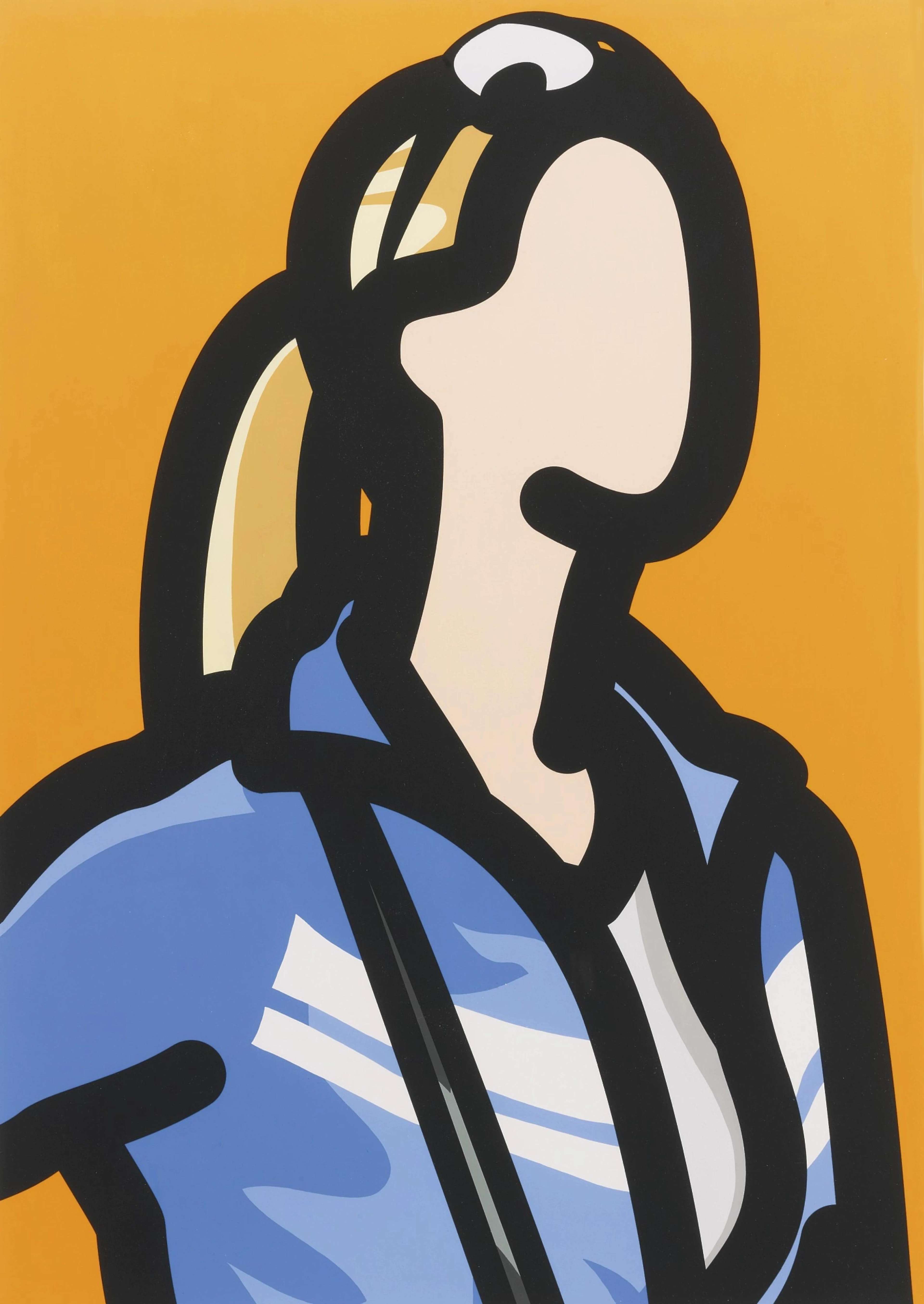
Tourist With Ponytail

Tourist With Ponytail
Signed Print
Julian Opie
£7,500-£11,500
$15,000-$23,000 Value Indicator
$14,000-$21,000 Value Indicator
¥70,000-¥110,000 Value Indicator
€8,500-€13,000 Value Indicator
$80,000-$120,000 Value Indicator
¥1,560,000-¥2,390,000 Value Indicator
$10,000-$15,000 Value Indicator
There aren't enough data points on this work for a comprehensive result. Please speak to a specialist by making an enquiry.
102 x 75cm, Edition of 20, Screenprint
Auction Results

Track auction value trend
Meaning & Analysis
Taken from Julian Opie’s Tourists series (2014), Tourist With Ponytail shows a portrait of a woman looking away from the viewer, depicted in bright colours of orange and blue and bold, thick contours. Opie anonymises the passer-by in rendering her face featureless, but makes the portrait distinct through use of colour, clothing and stance.
Tourist With Ponytail plays into Opie’s idea surrounding the sitter refusing to have their portrait made, as this woman is seemingly looking away from the viewer’s gaze. Indeed, this conjures up the feeling of wandering through a busy street where passers-by avoid the gazes of one another. Despite the way in which Opie has abstracted and simplified the original photograph, Tourist With Ponytail conveys a sense of realism in the viewer’s pose.
Showing the sitter to avoid the viewer’s gaze creates a melancholic drama in the portrait that is different from a portrait where the sitter’s face is visible. The line used to outline the woman’s face is so thick that Opie barely manages to distinguish her ear, thus solving the problem of dealing with facial features. This element of melancholic anonymity also allows the viewer to project their own experiences onto the image in how they relate to this person and recognise this as a familiar image.